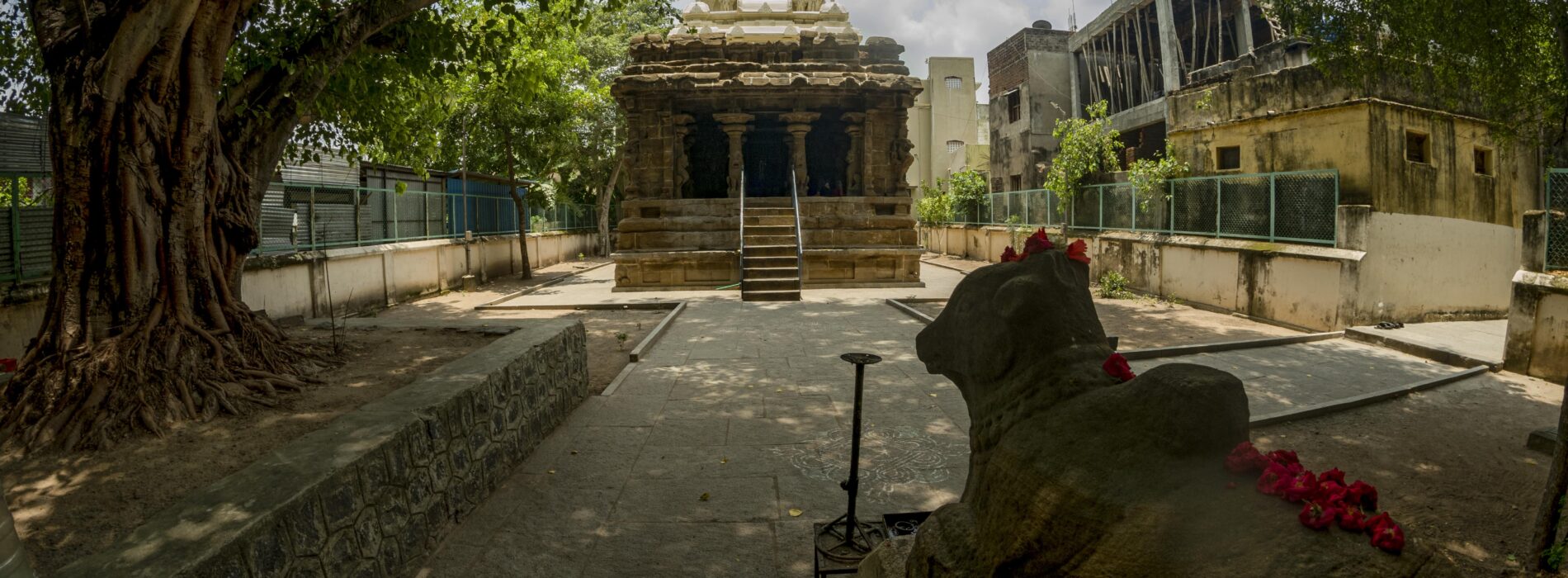Matangeshvara Temple
Exploring the Serene: A Testament to Pallava Architecture
The Matangeshvara Temple, nestled in the ancient city of Kanchipuram, stands as a magnificent example of Pallava craftsmanship. With its west-facing orientation and striking lion base pillars, this temple showcases the unique Pallava style of art.
The Legend of Sage Matanga
According to the sthalapurana (temple legend), Sage Matanga sought to attain absolute mastery over his senses through the divine grace of Lord Shiva, the supreme yogi. Consecrating a Shivalinga and worshipping Lord Shiva in this very place, the sage came to be associated with the temple. Hence, the presiding deity of the temple is known as Matangeshvara. This legend highlights the deep spiritual significance of the temple and its connection to self-discipline and inner control.
Architectural Splendors of the Matangeshvara Temple
As one approaches the Matangeshvara Temple, they are greeted by a large open courtyard and a flight of steps leading to the mukha mandapa. The temple’s lion base pillars, a signature of Pallava architecture, captivate visitors with their intricate designs. Upon entering the garbhagraha (sanctum sanctorum), one encounters the Lingabera, a black stone representation of Lord Shiva. The rear wall of the sanctum proudly displays the awe-inspiring Somaskanda panel, depicting Lord Shiva, Uma, and Skanda.
The Magnificent Vimana and Decorative Artistry
The Matangeshvara Temple features a tritala vimana, a three-tier structure with a square base, a circular shikhara (tower), and a kalasha (pinnacle) atop it. The temple’s exterior walls are adorned with various manifestations of Lord Shiva, meticulously carved by skilled artists. Notable sculptures include the Ravana-anugrhamurti, Gajasamharamurti, Gangadharamurti, and Urdhavathandavamurti. The intricate details and elevated basements of the temple highlight the mastery of the Pallava craftsmen.
Preservation and Spiritual Significance
Despite the passage of time, the Matangeshvara Temple has been diligently preserved, serving as a testament to the rich cultural heritage of Kanchipuram. The temple’s sanctity and spiritual significance continue to attract devotees seeking inner peace and divine blessings. The serene ambience and the divine presence of Lord Matangeshvara make it a must-visit destination for spiritual seekers and enthusiasts of ancient architecture.
Conclusion
The Matangeshvara Temple in Kanchipuram stands as a remarkable example of Pallava architecture, captivating visitors with its artistic splendor and spiritual significance. With its west-facing orientation, lion base pillars, and intricate carvings, the temple offers a glimpse into the ancient world of the Pallavas. The legend of Sage Matanga adds a mythical allure to the temple, highlighting its connection to self-discipline and spiritual enlightenment. Exploring the Matangeshvara Temple allows one to immerse themselves in the tranquility of its surroundings and appreciate the architectural brilliance of the Pallava dynasty.




